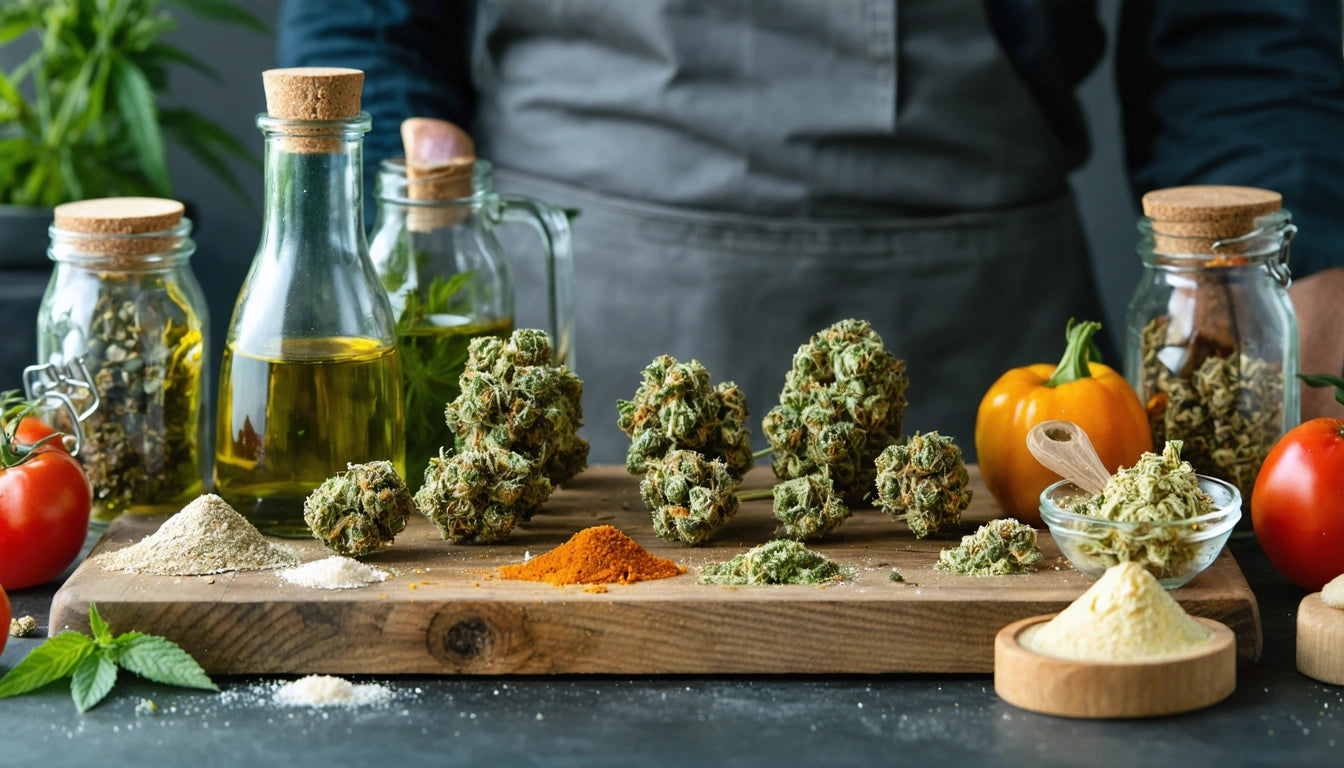Table of Contents
Terpenes represent a fascinating frontier in culinary exploration, offering aromatic compounds that can transform ordinary dishes into sensory experiences. These natural molecules found in cannabis and many other plants provide distinctive flavors and aromas that skilled chefs are now incorporating into sophisticated cuisine. Understanding how to pair these compounds with complementary ingredients while maintaining safety standards opens new possibilities for cannabis-infused cooking.
Understanding Terpenes in Culinary Applications
Terpenes are volatile aromatic compounds responsible for the distinctive smells and flavors in cannabis and many other plants. As explained in this comprehensive guide, these compounds contribute significantly to the sensory profile of cannabis strains. In cooking, terpenes function similarly to essential oils, providing concentrated flavor notes that can enhance dishes when used properly.
The culinary application of terpenes extends beyond cannabis-infused cooking. Many traditional herbs and spices contain the same terpenes found in cannabis. For instance, limonene appears in citrus fruits and lemon-scented herbs, while pinene is present in rosemary, basil, and pine nuts.
Essential Terpenes for Cooking
Popular Culinary Terpenes
Common cannabis terpenes that translate well to cooking include:
- Limonene: Citrusy notes perfect for desserts and seafood
- Myrcene: Earthy, musky flavors that complement root vegetables
- Pinene: Pine and herbal notes ideal for Mediterranean dishes
- Linalool: Floral, lavender-like aromas excellent for baked goods
- Caryophyllene: Spicy, peppery profiles for savory applications
Each terpene has a unique flavor profile that can be strategically paired with foods to create harmonious or contrasting flavor experiences. Understanding these profiles helps chefs create balanced dishes that highlight the best qualities of both the terpenes and the ingredients.
Flavor Pairing Principles
Successful terpene-based cooking relies on understanding complementary flavor profiles. Strain matching based on terpene profiles can guide culinary applications. For example:
- Limonene pairs well with fish, chicken, and citrus desserts
- Myrcene complements earthy mushrooms, root vegetables, and red meats
- Pinene enhances Mediterranean herbs, roasted potatoes, and coniferous-inspired dishes
- Linalool works beautifully with floral desserts, tea infusions, and delicate pastries
When working with cannabis-derived terpenes, proper storage becomes crucial to maintain potency and flavor. Many chefs utilize specialized airtight storage containers to preserve the volatile compounds and prevent oxidation, which can degrade terpene quality and alter flavor profiles.
Safety Considerations
Safety remains paramount when cooking with terpenes. Consider these essential guidelines:
Dosage Control
Terpenes are highly concentrated substances that should be used in minute quantities. Typically, culinary applications require only 1-2 drops per dish to impart flavor without overwhelming the palate or creating safety concerns.
Temperature Sensitivity
As explained in this article on extraction methods, terpenes are volatile compounds that can degrade at high temperatures. Most terpenes begin to evaporate between 70-100 °C (158-212 °F), meaning they should be added toward the end of cooking or to dishes that don't require high heat.
Sourcing and Quality
Only use food-grade terpenes specifically designated for culinary use. The difference between synthetic and botanical terpenes is significant for cooking applications, with natural botanical terpenes generally preferred for their complex flavor profiles.
Techniques for Terpene Preservation
To maximize the flavor impact of terpenes in cooking:
- Add terpenes after cooking when possible to prevent volatilization
- Incorporate into cold infusions like oils, honey, or alcohol
- Use in sous vide cooking where temperatures remain controlled
- Pair with fatty ingredients that capture and preserve volatile compounds
Understanding how terpenes contribute to the entourage effect can also inform culinary applications, especially when creating full-spectrum cannabis dishes where the interaction between compounds enhances both flavor and effects.
Advancing Your Terpene Culinary Skills
As you develop expertise in cooking with terpenes, consider exploring these advanced techniques:
- Terpene layering: Using multiple complementary terpenes at different stages of cooking
- Aroma pairing: Creating dishes where the aroma of terpenes enhances the eating experience
- Terpene mixology: Developing signature drinks with carefully balanced terpene profiles
Learning to read terpene lab reports can further refine your understanding of specific profiles and help you make more informed culinary decisions. Additionally, exploring how terpenes affect mood and energy allows for creating functional foods that offer both flavor and potential wellness benefits.
The intersection of culinary arts and terpene science represents an exciting frontier for innovative chefs. By respecting the potency, volatility, and unique characteristics of these compounds, cooks can create memorable dining experiences that engage all the senses while maintaining the highest standards of safety and quality.











Leave a comment
All comments are moderated before being published.
This site is protected by hCaptcha and the hCaptcha Privacy Policy and Terms of Service apply.